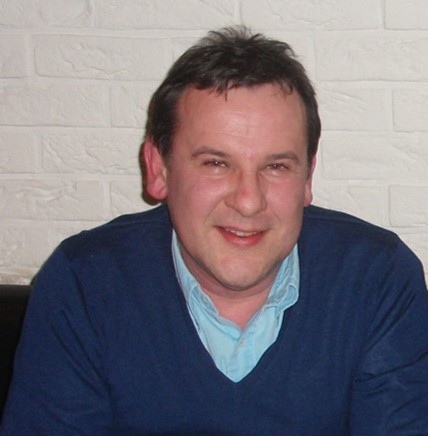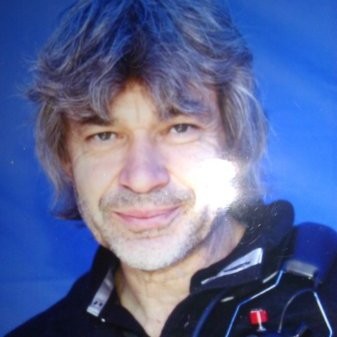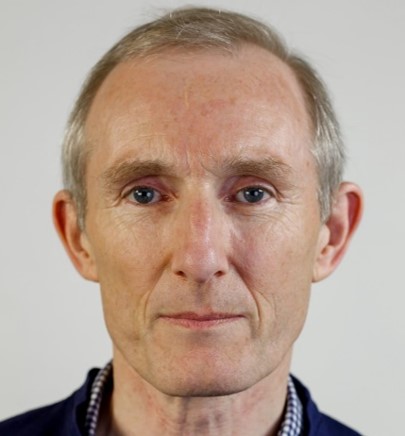In addition to founder member, Matthew Jeffreys, we are delighted to have on board a number of high-achieving associate members including legendary McLaren F1 designer and Ayrton Senna's race engineer in 1988, Steve Nichols and also former McLaren engineer and Ayrton's race engineer in the early 90s, James Robinson. For aerodynamics and vehicle performance development we are delighted to have Ian Wright. Working for McLaren, Mercedes-AMG and Sauber Motorsport, Ian has vast experience in F1 with roles including Head of Vehicle Performance, Chief engineer for driving simulator and Head of R&D.
Matthew Jeffreys

Born and raised near Bath in the UK, Matthew has had motorsport in his blood since his school days and in 1980 became McLaren’s first-ever sponsored undergraduate student engineer. He graduated with a BSc (Hons) degree in Mechanical Engineering from Hatfield in 1984 and soon after joined McLaren full-time. Under chief designer John Barnard, Matthew immediately formed a strong working alliance with him and senior engineer Steve Nichols and during this period learnt the trade of designing and detailing many racing car components; specializing in light-weight structures made in light alloys and carbon fibre composites.
When Nichols was appointed chief designer in 1987 Matthew was made responsible for the monocoque design, composite crash structure and front suspension integration for the 1988 car: the MP4-4. In 1991 he took responsibility for the installation of an all-new Honda V12 engine in an experimental chassis used as the basis car for the following season’s design.
In the early 1990’s, as the growth of the company continued, Matthew was appointed Project Leader for overall chassis design; a position he held for over 10 years. Leading an engineering design team of 14, he produced 15 different Formula 1 car monocoque chassis, which won numerous Grands Prix and 5 constructors’ World Championships.
In 2003, as a Senior Project Engineer, Matthew was tasked with radically improving the efficiency of the company’s engineering business processes. Implementing new computer aided engineering (CAE) and data management technology that linked all departments within the organisation - his improvements led to a 22% increase in productivity in less than 9 months.
Since 2006 Matthew has been
working as an independent consultant, specializing in developing advanced
design and manufacturing solutions for composite structures as well as assisting companies with business development process efficiency improvement. To supplement his business activities Matthew has also designed,
patented, developed and brought to the UK market a full-face cycle helmet for
children.
Steve Nichols

After graduating from University of Utah in 1972, Steve’s first job was with Hercules Aerospace where he was involved in the design and analysis of submarine based rockets. This provided an early insight into the use of carbon composite materials and computational structural analysis through finite element modelling.
Having always been interested in racing, Steve’s next job was at Gabriel designing dampers for Indy cars. This role laid the foundations for his future career and provided the ideal environment to learn the complexities of race vehicle dynamics as well as the workings of a wide variety of racing cars and racing teams.
In the early 80’s Steve’s expert knowledge of composite materials and vehicle dynamics attracted the attention of McLaren’s chief designer John Barnard who invited him to join the team as a senior designer and race engineer. It was the beginning of a golden period commencing with Steve assisting Niki Lauda in his 3rd Championship and culminating with him being appointed chief designer - a role which resulted in the creation of the MP4-4 McLaren of 1988. This car made history in becoming the most successful Grand Prix car of all time; winning 15 out of 16 races in the hands of Ayrton Senna and Alain Prost.
In 1990, as a direct result of his achievements at McLaren, Steve could not resist the lure of Ferrari and the challenge of trying to win them their first championship in over a decade. Although the championship ultimately proved elusive, the team achieved 2nd and 3rd places in ’90 and ‘91 were race-win contenders throughout his time there as head of design and trackside engineering. The experience of working for the most famous name in motorsport is one he will never forget.
After spells as chief designer at both Sauber and Jordan between ’92 and ’94, Steve returned to McLaren in ’95 as a design and trackside development consultant. The team was enduring a period of relative un-competitiveness compared with their former high standards and in the following 2 ½ years Steve assisted in their dramatic turnaround returning them to race-winning form with 5 victories in 1997.
Since 2007, Steve has devoted his time to consultancy work and personal projects, including the design and development of the Nichols N1A track-day sports car. https://www.nichols-cars.com/
James Robinson

40 Years at top level F1 as Chief Engineer and CEO with two 6 years periods with Williams F1 as well as 6 years with McLaren F1 plus BAR Honda, Jordan and Arrows in the early days. Over that time bringing 7 Formula 1 World Titles home and over 100 podiums. In Parallel delivered two outright wins at LeMANS 24 HOURS. with McLaren and Bentley.
Formed Engineering Consultancy in parallel in 2003 and delivered F3 and Macau Champions, A1GP and GP2 World titles; as well Indy Car, DTM and again over the last six years with Rebellion Racing; Team Championship, 6 years 4 top 6 place finishes (2 fourths) outright at Lemans 24 Hours with LMP1 and two outright Wins at Petit LeMans in IMSA USA.
Trained designer on the drawing board and CAD. Familiar with all design activities, manufacturing and development within Motorsport, especially Formula 1 as well as engineering product Management, man management, Operations and Driver Development. Race Strategy and logic. Tyre and vehicle development.
Ian Wright

Ian has worked for 30+ years at the top level of motorsport and prior to that 5 years in the aerospace industry.
In 1990 Ian Joined McLaren F1 where he was responsible for the development and application of vehicle performance simulation, analysis toolset development and competitor comparison techniques. These tools were used to help McLaren win championships in 1990 and 1991.
Ian led the development of new analytical techniques that identified key vehicle performance development problems at McLaren F1 in 1996 and 1997 and helped change the way vehicle performance was developed with the outcome of helping McLaren F1 win the world championship in 1998 and being very competitive for many years after that.
In 1998, Ian started as Senior Engineer at BAR (which became Honda F1, Brawn and then Mercedes F1) developing vehicle dynamics modelling software and analysis techniques when the company was British American Racing. He became Chief Engineer: Vehicle Dynamics, when the company was owned by Honda and then Brawn GP. Then became the Head of Engineering Software, leading the department to develop decision influencing software (maths models + analytical) for use by the engineering team at Mercedes F1.
In 2012, Ian led the development of the vehicle performance concept with another senior vehicle dynamicist at Mercedes F1 that helped move Mercedes from a distant 5th in 2012, to a competitive 2nd in 2013 and a series of championship wins starting in 2014.
In 2014 Ian joined Pratt & Miller Engineering where he led the development of the Chevrolet Driver-In-the-Loop Simulator that was used by Chevrolet motorsports teams in NASCAR, IndyCar and Corvette race team. The simulator quickly became an integral part of all Chevrolet motorsports teams pre race preparation and longer term race car performance development and helped Jimmie Johnson, driving for Hendrick Motorsports, win the NASCAR Cup series in 2016 and Simon Pagenuad, driving for Penske, to win the Indycar championship in 2016 (from 11th the previous year).
In 2017 Ian joined Sauber F1 / Alfa Romeo Racing as head of vehicle performance where he helped the team move forwards from last on the grid in 2017 to 8th in 2018, 2019 and 2020.
Since leaving Sauber F1 at the end of 2020 Ian has developed the vehicle performance development concept to a new level, ready for a team that wants to move up the F1 grid to fight for championship wins.
As Head of Vehicle Science or Vehicle Performance, Ian has extensive experience of developing and leading high performing teams, and knowledge of the development and application of leading edge simulation and analysis techniques.
If you have skills, experience and knowledge you think will be of interest to us and our clients and you are interested in becoming an associate member of 4Four Associates, please email me at:
